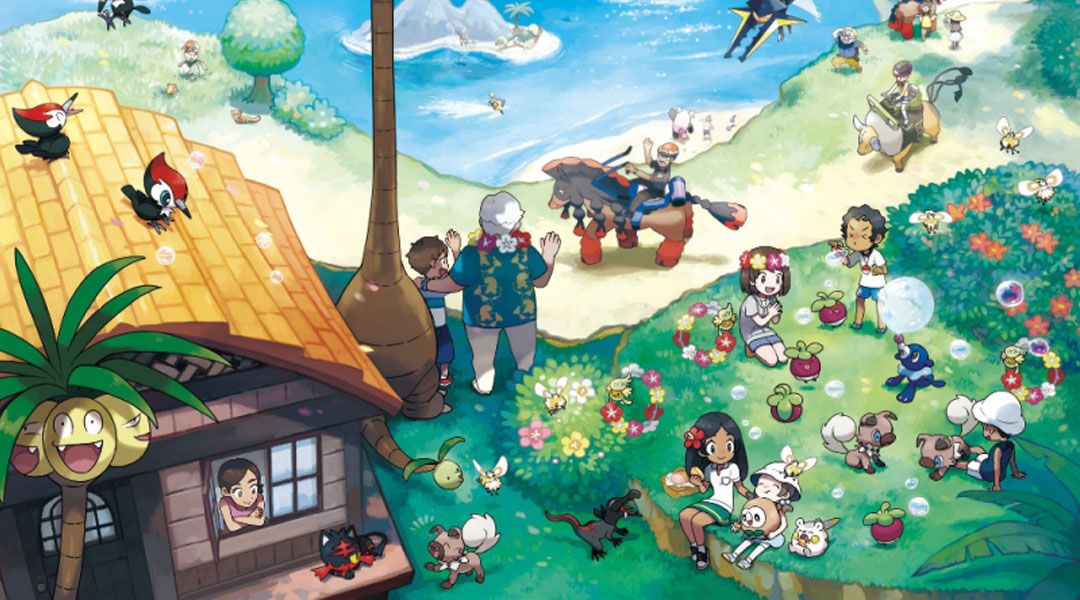
One Game Rant editor takes a look at the inspiration for the new Alola forms in Pokemon Sun and Pokemon Moon in an attempt to defend the premise of such creatures.
Messing with longstanding franchises can be a tricky bit of business for any company to spearhead. Whether film, television, or video games, changes to existing characters hits many people the wrong way – and the exact same can be said for the newly unveiled Alola variants in Nintendo’s upcomingPokemon Sun and Pokemon Moon games. However, in this particular instance, it’s really the best case scenario for longtime followers of the Pocket Monster series, and it has potential to radically change the game as fans know it.
For those not already aware, alternate forms are being given to Vulpix, Ninetales, Sandshrew, Sandslash, and Exeggutor in the next pair of core entries into the Pokemon franchise. These new appearances are accompanied by massive typing changes that are exclusive to the Alola region (i.e. Vulpix becoming an Ice-type), and there are sure to be even more of these alternate forms showcased as The Pokemon Company continues to slowly drop information on the hotly anticipated titles.
These forms have been met with mixed reactions from gamers, some of which are accusing developer Game Freak of retreading on existing ideas instead of innovating with new creatures. Indeed, the premise of repurposing older monsters in lieu of creating new ones may seem like a cheap trick, but the reality of their existence is rather ingenious, and this is because it ties in perfectly with the never-before-seen tropical setting of Alola.
Regardless of jokes that are being made en masse about the elongated look of the Alola variant of Exeggutor, the premise of such differences amongst species is based on research documented in Charles Darwin’s On the Origins of Species. The scientist’s research on evolution in particular is what makes this Alola variation implementation standout, as the setting in which Darwin did the bulk of his research (the Galápagos Islands) has a very similar layout and climate (for the most part) as the new Alola region. While the new in-game area for Sun and Moon is based on Hawaii, the fact that the map is broken up into four different land masses is reminiscent of the terrain in which the theory of evolution most greatly presented itself.
Since Pokemon are located across an entire world with a vast number of different environments and predators, these creatures evolve slowly over time to adapt to their habitats – rather than immediately go through a tried-and-true metamorphosis to take on new forms, although they certainly do that too. Since the premise of evolution is heavily associated with the world ofPokemon, altering the variations of beasts that appear based on their location is a natural step for the franchise to take, and it’s actually something that the games have slowly been implementing for quite some time.
While perhaps not as drastic, variants on existing Pokemon have been occurring since 1996’sPokemon Red and Green with the male and female versions of Nidoran. This was further emphasized when Unknown first reared their heads (err… eyes) in Pokemon Gold and Silver, and it finally reached a head with Shellos and its evolved form Gastrodon having different forms and colors based on whether they are found in the Sinnoh region’s East Sea or West Sea. It’s all been building up to this moment, and Game Freak is finally allowing that premise to be realized in this pair of upcoming games.
As more Alola forms are inevitably revealed, the fact that they exist presents a unique opportunity to breathe new life into the series. All of a sudden these older Pokemon are relevant again through a means outside of Mega Evolution, and they greatly alter existing battle tactics in the process. While the jury is still out on how each monster’s stats will vary (and more importantly how they’ll alter the competitive scene), these off-shoots of all too familiar companions deepens the variety available within a franchise that’s often criticized for presenting consumers with the same game over and over again.
Changes like Alola versions are the reason why I’m in my mid-twenties and still play Pokemon, because catching ’em all becomes more challenging and the world becomes more immersive with every new iteration. Pokemon Sun andPokemon Moon are no exception.
Pokemon Sun and Pokemon Moon are set to arrive exclusively for the Nintendo 3DS and Nintendo 2DS on November 18, 2016.
[Source: GR]


